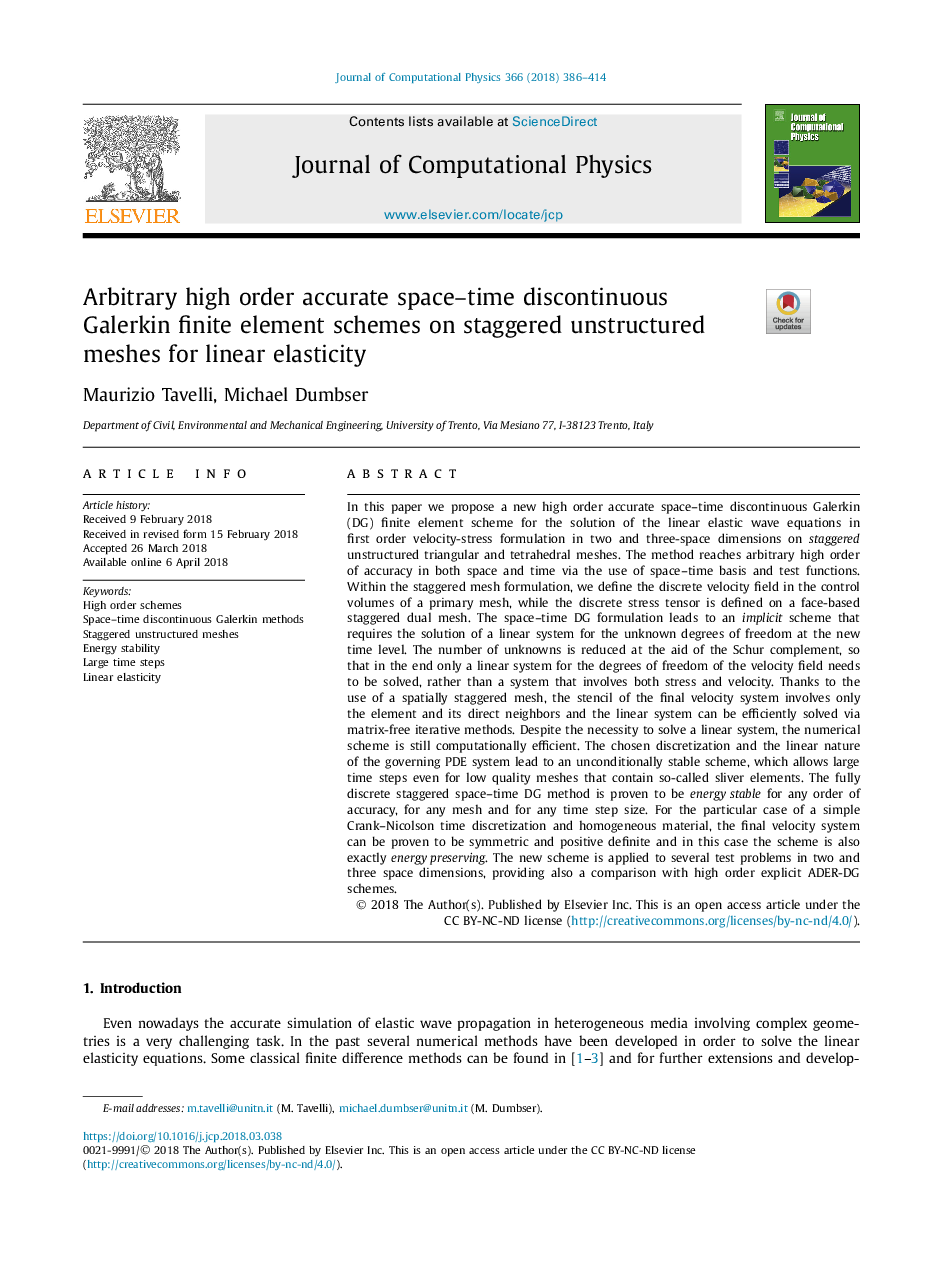| Article ID | Journal | Published Year | Pages | File Type |
|---|---|---|---|---|
| 6928844 | Journal of Computational Physics | 2018 | 29 Pages |
Abstract
In this paper we propose a new high order accurate space-time discontinuous Galerkin (DG) finite element scheme for the solution of the linear elastic wave equations in first order velocity-stress formulation in two and three-space dimensions on staggered unstructured triangular and tetrahedral meshes. The method reaches arbitrary high order of accuracy in both space and time via the use of space-time basis and test functions. Within the staggered mesh formulation, we define the discrete velocity field in the control volumes of a primary mesh, while the discrete stress tensor is defined on a face-based staggered dual mesh. The space-time DG formulation leads to an implicit scheme that requires the solution of a linear system for the unknown degrees of freedom at the new time level. The number of unknowns is reduced at the aid of the Schur complement, so that in the end only a linear system for the degrees of freedom of the velocity field needs to be solved, rather than a system that involves both stress and velocity. Thanks to the use of a spatially staggered mesh, the stencil of the final velocity system involves only the element and its direct neighbors and the linear system can be efficiently solved via matrix-free iterative methods. Despite the necessity to solve a linear system, the numerical scheme is still computationally efficient. The chosen discretization and the linear nature of the governing PDE system lead to an unconditionally stable scheme, which allows large time steps even for low quality meshes that contain so-called sliver elements. The fully discrete staggered space-time DG method is proven to be energy stable for any order of accuracy, for any mesh and for any time step size. For the particular case of a simple Crank-Nicolson time discretization and homogeneous material, the final velocity system can be proven to be symmetric and positive definite and in this case the scheme is also exactly energy preserving. The new scheme is applied to several test problems in two and three space dimensions, providing also a comparison with high order explicit ADER-DG schemes.
Related Topics
Physical Sciences and Engineering
Computer Science
Computer Science Applications
Authors
Maurizio Tavelli, Michael Dumbser,
